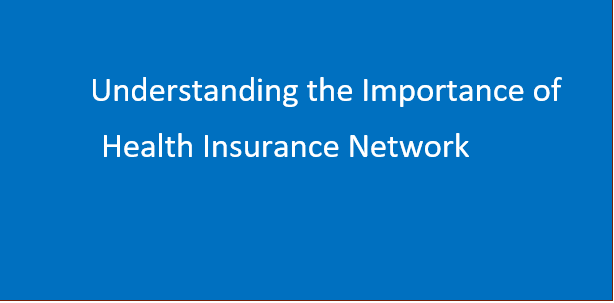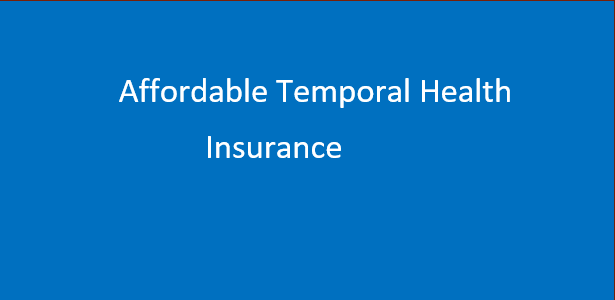Understanding the Importance of Health Insurance Networks – Choosing a health insurance plan can be confusing and overwhelming. Networks, deductibles, copays, and coinsurance – what does it all mean?
In this blog post, I’ll walk through the key aspects of health insurance plans, with a focus on understanding provider networks and why they’re so important.
What is a health insurance network?
A health insurance network is the group of doctors, hospitals, labs, and other providers that your health plan contracts with to deliver medical care.
When you choose an in-network provider, you’ll pay less out of pocket for the services you receive.
Why are networks so important?
Staying in-network is key to getting the most value from your health insurance policy. Here’s why:
- Cost savings: In-network providers charge negotiated rates that are often much lower than what they’d charge someone without insurance. Your share of costs will be based on the discounted rate.
- No balance billing – In-network providers can’t bill you for anything beyond your agreed cost-sharing amount (deductibles, copays, coinsurance). Out-of-network providers can bill you for the difference between their fee and what your plan pays.
- Better coverage – Most health plans will only cover out-of-network services in urgent or emergencies. For routine care and elective procedures, you’ll likely have to foot the entire bill if you go out-of-network.
How do I know which providers are in my network?
When you enroll in a health plan, you’ll get a provider directory that lists all the doctors, facilities, and suppliers that participate in the network.
Many insurers also have online directories you can search. Confirm a provider’s network status before every visit to avoid surprise bills.
What if I want to see an out-of-network doctor?
Seeing an out-of-network provider is almost always more expensive.
You’ll have to pay your normal cost-sharing plus any amount exceeding your plan’s maximum payment to out-of-network providers.
You may have to submit your own claims for reimbursement.
Consider getting a referral to an in-network provider instead.
What is a narrow vs. broad network?
Some plans have broader networks with more provider options, while others are narrower.
- Broad networks give you more choices, but premiums tend to be higher. It’s best if you value flexibility.
- Narrow networks have fewer providers and may limit hospital choices. May have lower premiums but less flexibility. Check to make sure your preferred doctors are included.
How do I find providers in my network?
- Check your plan’s provider directory through the insurer’s website or customer service.
- Call your doctor’s office and ask if they participate in your insurance plan.
- Ask for in-network referrals from your primary care provider.
- Use your insurer’s online directory to search for in-network specialists, labs, pharmacies, etc.
What if there are no providers near me?
If there are no viable in-network options within a reasonable distance from you, call your insurer to explain the situation and request an exception.
They may allow you to see an out-of-network provider at the in-network rate or recommend alternative providers.
What if I need emergency or urgent care out-of-network?
In an emergency, your insurer must cover out-of-network ER services as if they were in-network.
However, for non-emergency urgent care, out-of-network providers could still potentially balance bill you.
Try to find an in-network urgent care center when possible.
How can I make the most of my health network?
- Stick to in-network providers whenever possible, including for primary care, specialists, hospitalization, lab work, imaging, etc.
- Confirm a provider’s network status prior to every visit. Don’t assume your doctor is still in-network if it’s been a while.
- Consider convenience factors like location and appointment availability, in addition to costs.
- Check if your plan has different cost-sharing tiers that determine which providers you choose.
- Take advantage of online tools, if offered, to estimate costs and find providers specific to your plan.
What is a Health Maintenance Organization (HMO) network?
An HMO plan typically only covers in-network care, except in emergencies.
HMO networks tend to be narrower, so be sure the doctors you want to see are included before enrolling.
HMOs often require you to choose a primary care physician (PCP) to coordinate care. Referrals are needed to see specialists.
What is a Preferred Provider Organization (PPO) network?
A PPO plan covers both in-network and out-of-network care, but you pay less for in-network providers. PPO networks tend to be broad, giving you more options.
Unlike HMOs, PPO plans don’t require a PCP or referrals to see specialists. Out-of-network care is covered, but with higher costs.
What is a point-of-service (POS) care network?
A POS plan is a hybrid, combining aspects of both HMO and PPO plans.
Similar to an HMO, you must choose a PCP and get referrals for specialists. But like a PPO, POS plans will cover out-of-network care (at higher costs).
POS plans tend to have moderate-sized networks.
Key Takeaways
- Staying in-network provides the lowest out-of-pocket costs from your health plan. Out-of-network care costs much more.
- Provider networks include the doctors, hospitals, clinics, labs, and other providers covered under your plan.
- Always check provider network status before any healthcare visit to avoid surprise bills.
- Look for a network that includes your preferred doctors and hospitals nearby. Balance cost, convenience and flexibility.
- HMOs have the narrowest networks but potentially lower premiums. PPOs offer the most flexibility but cost more.
Conclusion
- Understanding health insurance provider networks helps you maximize your coverage and minimize costs.
- Sticking to in-network providers saves you money on the care you receive.
- Check your plan documents or use online tools to find in-network providers that meet your needs and preferences.
- Don’t assume providers are still in-network – always confirm before each visit.
- Weigh network size, cost, convenience, flexibility and other factors when choosing a health plan.
Frequently Asked Questions Health Insurance Networks
What if I need to see a specialist that’s not in my network?
You can ask your insurer for a referral to an in-network specialist. If none is available, your insurer may grant an exception to cover an out-of-network specialist at the in-network cost-sharing rate.
How are providers added to or removed from networks?
Insurers negotiate contracts with providers to join networks. Providers may leave networks if they can’t agree on reimbursement terms. Check provider directories regularly for changes.
Can I switch plans if my provider leaves the network?
Yes, you can switch plans during your employer or marketplace’s open enrollment period if your provider leaves your current plan’s network during the year.
What if I’m hospitalized out-of-network in an emergency?
Your insurer must cover out-of-network emergency care as if it were in-network. However, follow-up care may be out-of-network unless transferred to an in-network hospital when stabilized.
What if there are no in-network providers near me?
Contact your insurer regarding “network inadequacy.” If there are no appropriate in-network options nearby, they may provide exceptions to cover out-of-network care at in-network rates.
Recommended Post:
Affordable Temporal Health Insurance: for Short-Term Coverage
Choosing the Right Individual Health Policy for Your Well-being



